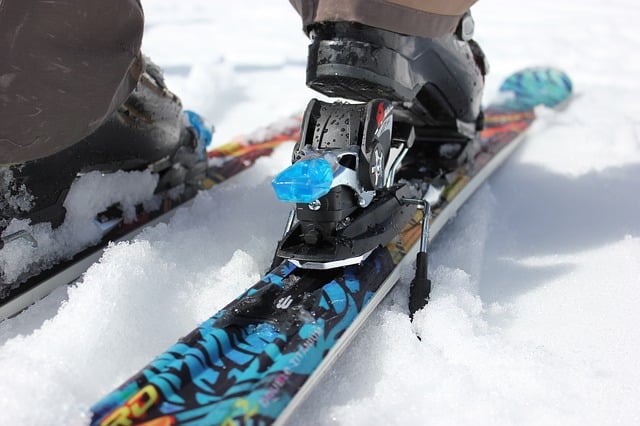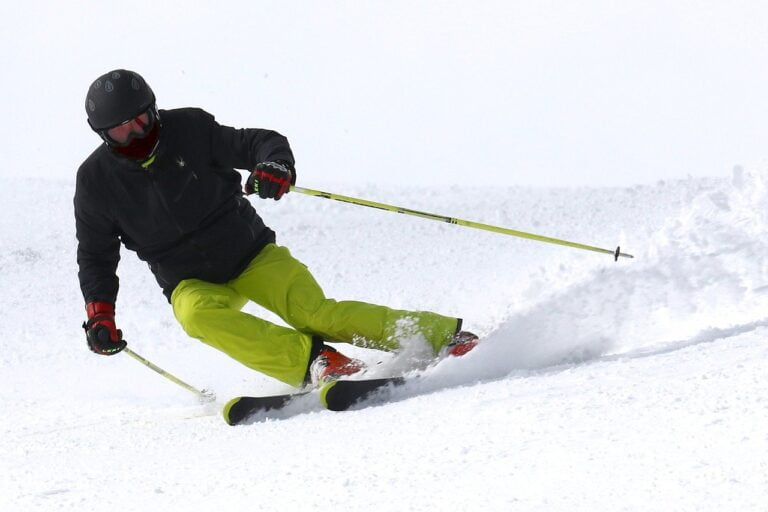The World Of Thermal Clothes In Skiing And Snowboarding

Our content may include affiliate links, through which we earn a small commission on purchases. Want to learn more about us? Read here.
When heading out to hit the ski slopes for skiing or snowboarding, what you wear is critical to a safe and fun time. One essential piece of gear that’s become a game-changer is thermal clothing.
Thermal clothes for skiing and snowboarding are designed to keep you warm by trapping body heat and whisking away sweat, essential for maintaining the right body temperature and performing your best on the snow.
We’ll discuss why rocking thermal clothes is a big deal when you are on skis or a snowboard. They’re all about keeping you comfy, safe, and at the top of your game.
Temperature Regulation: The Core Function of Thermal Clothing

Thermal clothing’s main job is to help manage your body temperature, especially in cold environments. Base layers, worn next to your skin, are pivotal in achieving this goal. Skiing and snowboarding expose individuals to frigid temperatures, making it imperative to keep the body warm to prevent hypothermia or frostbite.
Thermal clothes are typically made of materials like synthetic fabrics or our favorite, Merino wool, which are excellent at trapping air close to the skin and creating an insulating layer. This layer of trapped air helps retain the body’s natural warmth, ensuring the skier or snowboarder remains comfortable throughout the day.
If you are the type of person that naturally runs warm, then a pair of lightweight layers would be best to help with wicking moisture. Or if you are a person who likes or needs extra warmth, then a midweight layer is better for you. In either case, most base layers will come in different weights.
Merino Wool

Merino wool base layer fabric is top-notch for base layer fabrics, thanks to their natural warmth, cooling, and moisture-wicking capabilities. Choosing a merino wool base layer is a no-brainer when gearing up for cold-weather expeditions. The insulating layers in Merino wool keep you cozy regardless of the weather.
One of the standout features of Merino wool is its knack for quickly soaking up and evaporating sweat, effectively managing your body temperature. It keeps you warm when it’s chilly and cool when it’s warmer. Speaking of sweat, wool is naturally odor-resistant. This is a huge plus when it comes to eliminating odor-causing bacteria.
Plus, its lightweight design makes it perfect for all sorts of activities. If you want warmth and comfort no matter where life’s adventures take you, Merino base layers are the way to go. In addition, the wool comes from Merino sheep, so it is a natural product, not made by humans like other products.
Tip: If in the past you were not able to wear wool next to skin because it made you itch, give Merino wool a chance. I was one of those people who could not wear wool clothing in the past due to sensitive skin, but not anymore. These days, I’m always prepared with a set or two of base layers in my ski bag.
Synthetic Fabric
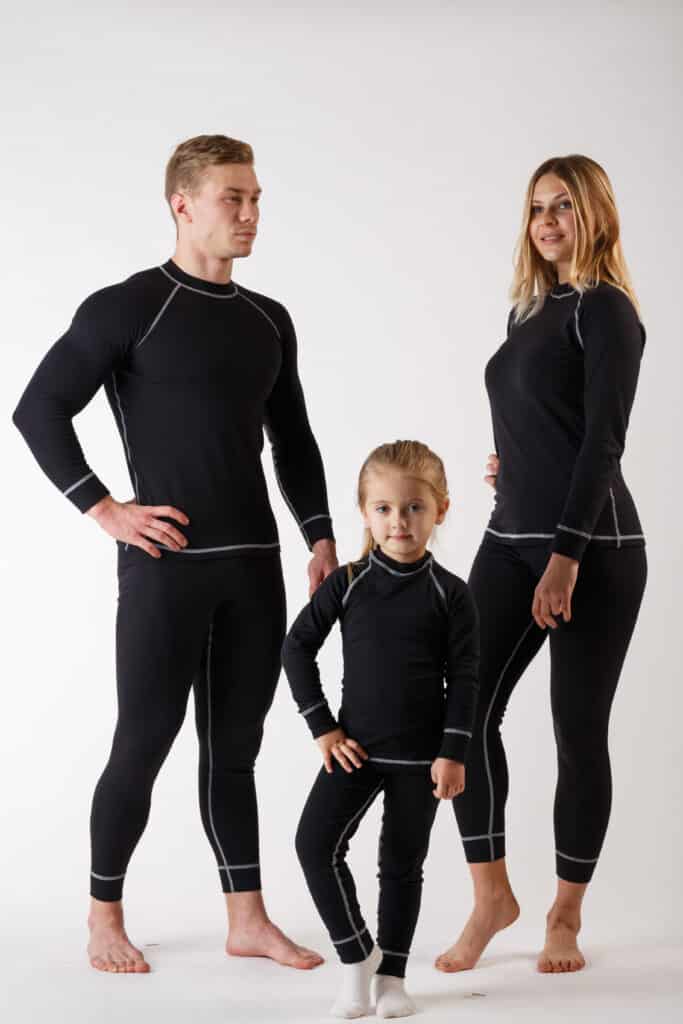
Synthetic blend (sometimes polyester) base layers are a hit among us outdoor enthusiasts because they offer the perfect combo of cooling and warmth exactly when we need it. They’re super lightweight, making them the go-to choice for lightweight base layers.
They’ve also got this excellent moisture-wicking feature that helps prevent those annoying rashes or blisters—clutch, especially during intense activities when we’re sweating more and need that extra cooling.
Synthetic base layers have become must-haves for a lot of folks. They keep you comfy and in the zone, regardless of temperature or surroundings. It’s like having that perfect balance of coolness or warmth wherever we roam.
Moisture Management: Keeping Dry for Optimal Performance
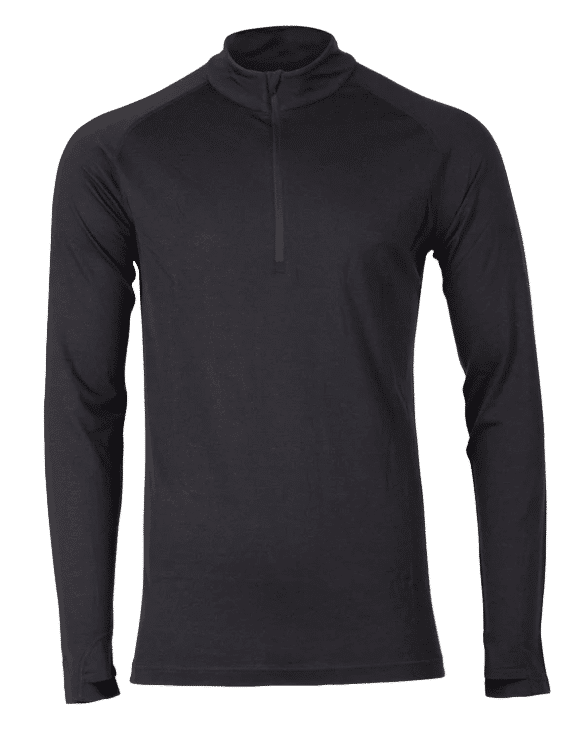
Aside from cold temperatures, winter sports often involve physical exertion, resulting in sweat. Moisture management is crucial in preventing discomfort and enhancing performance. Thermal clothing is designed to wick moisture away from the skin, transporting it to the outer layers where it can evaporate.
By keeping the body dry, thermal clothes prevent the accumulation of sweat, which can lead to a chill when exposed to the cold. Maintaining a dry and comfortable body is essential for maintaining focus and agility on the slopes.
Layering: The Art of Staying Warm and Flexible
Layering is one of the critical strategies for coping with variable weather conditions while skiing or snowboarding. Thermal clothing forms the foundational layer in this system, providing a base of warmth. When you wear base layers as the first layer, you can easily adjust your temperature and comfort levels by adding or removing other layers.
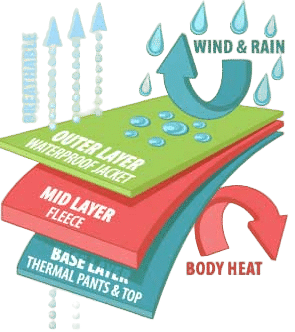
A brief description of layers: Start with your base layer, then your mid layers, typically a puffy coat, sweatshirt, etc. And lastly, your outer layer, waterproof and windproof ski jacket and snow pants.
This flexibility allows for optimal body temperature regulation, ensuring that skiers and snowboarders can adapt to changing conditions on the mountain.
Enhanced Performance: Aiding Flexibility and Mobility
In winter sports, freedom of movement is paramount for the skillful execution of maneuvers and maintaining balance. Thermal clothing is often designed with stretchable fabrics and will fit snugly to the body without restricting movement.
This allows skiers and snowboarders to move freely and perform with precision and confidence. The absence of bulk associated with traditional winter clothing allows for a streamlined, aerodynamic silhouette, ultimately contributing to improved performance.
Reduced Fatigue: Maintaining Energy Levels
Neglecting to keep your body warm and adequately insulated when skiing or snowboarding can heighten the risk of body fatigue. Cold temps can cause your muscles to work harder to maintain a consistent body temperature, expending more energy and leading to quicker fatigue.
Additionally, shivering and tensing up due to the cold can strain muscles and deplete your stamina faster. Insufficient insulation from proper thermal clothing can contribute to feeling cold, distracting you from focusing on the activity and leading to a mental and physical energy drain.
Ensuring that you’re appropriately layered with thermal clothing to maintain body warmth is crucial in managing fatigue and sustaining your energy levels during cold-weather activities.
As a result, skiers and snowboarders experience less fatigue, enabling them to enjoy prolonged periods on the slopes and maintain peak performance throughout the day.
Injury Prevention: Mitigating the Risk of Accidents
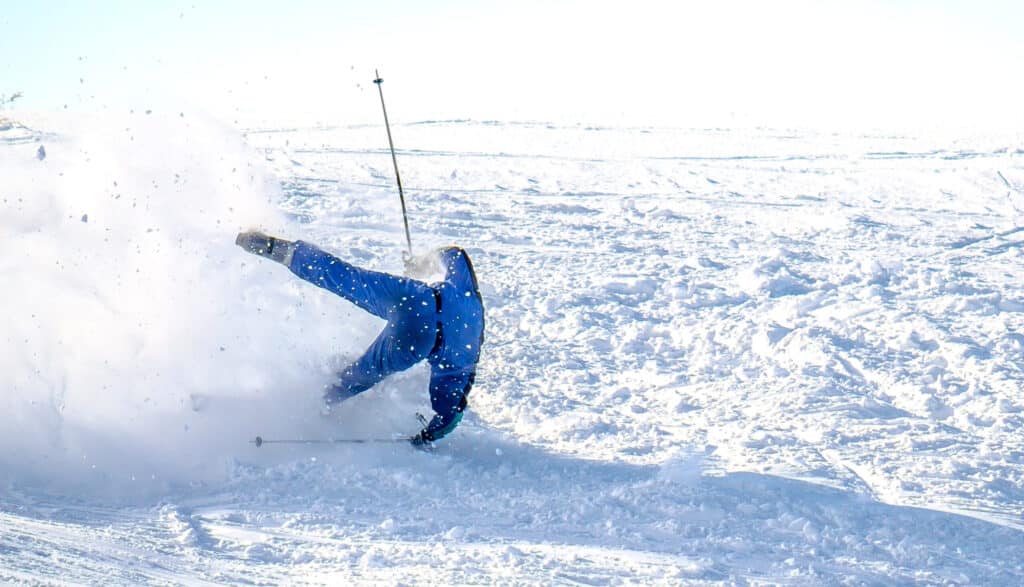
Skiing and snowboarding inherently carry a risk of falls and accidents. In the unfortunate event of a fall, the body can be exposed to cold, wet conditions for an extended period, increasing the risk of hypothermia or frostbite.
Thermal clothing is a protective barrier, preventing direct skin exposure to the elements. By keeping the body warm and dry, thermal clothes mitigate the risk of cold-related injuries, ensuring a safer experience on the mountain.
Failing to keep your muscles warm during cold weather activities can significantly heighten the risk of injuries. When muscles are not adequately warmed up, they tend to be stiffer and less flexible, making them more prone to strains, sprains, and tears.
Cold temperatures can cause muscle constriction and reduce blood flow, inhibiting proper oxygen and nutrient delivery to the muscles. This constriction can lead to decreased muscle elasticity and increased susceptibility to injuries, especially during sudden movements or abrupt changes in direction.
Proper warm-up exercises and wearing appropriate thermal clothing can help maintain muscle warmth and flexibility, significantly reducing the risk of injuries during cold-weather activities like skiing and snowboarding.
Conclusion
The importance of wearing thermal clothes while skiing or snowboarding cannot be overstated. These specialized garments provide crucial temperature regulation, moisture management, and flexibility for winter sports enthusiasts. Base layers are also crucial for other winter outdoor adventure sports, like snowshoeing, alpine touring, cross-country skiing, or just playing in the snow.
We also learned that not all base layers are the same. However, they essentially perform the tasks of keeping you warm and whisking moisture away from your body. Whether you choose Merino wool or synthetic materials is a personal choice.
From enhancing performance and reducing fatigue to preventing injuries, thermal clothing plays a vital role in making the skiing or snowboarding experience comfortable but also safe and enjoyable. Investing in high-quality thermal apparel maximizes your joy and adventure of hitting the slopes in cold, wintry conditions.

